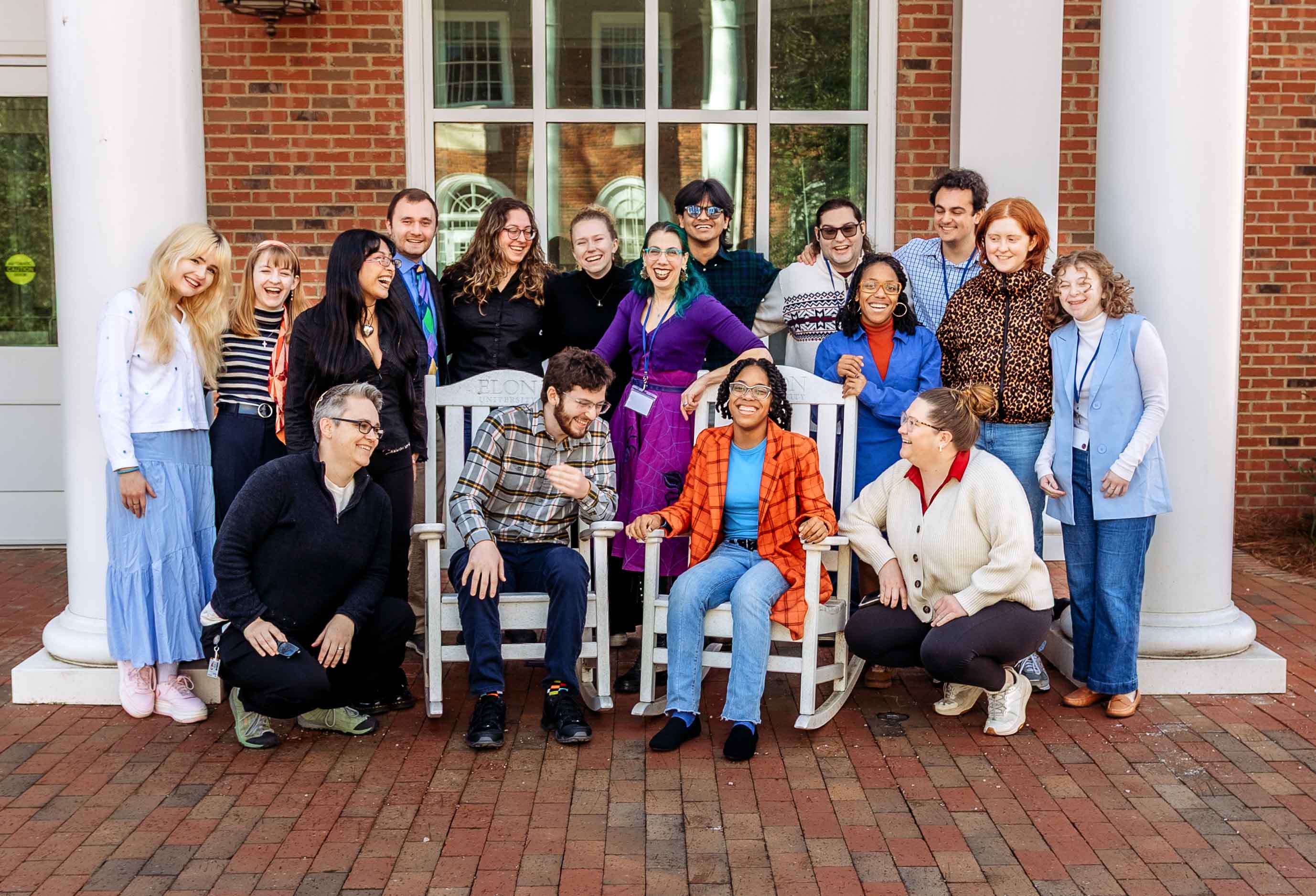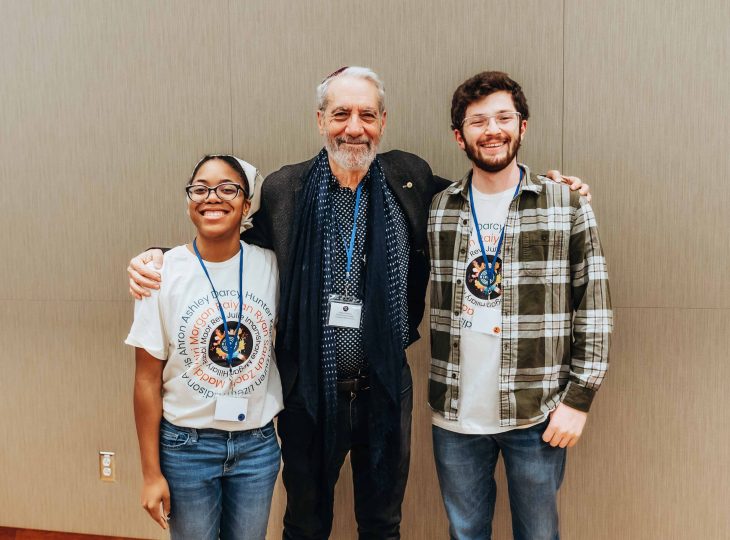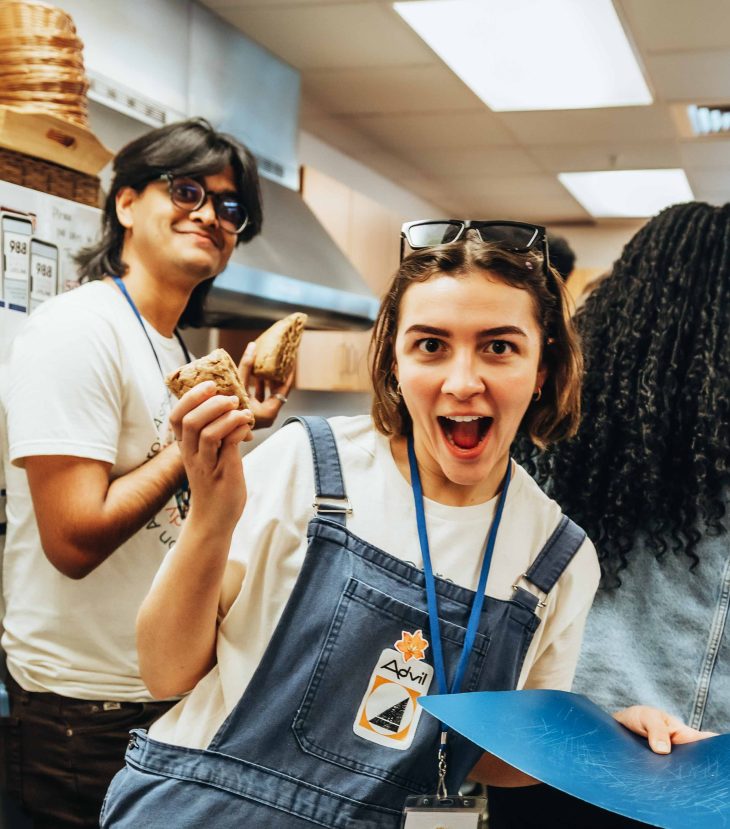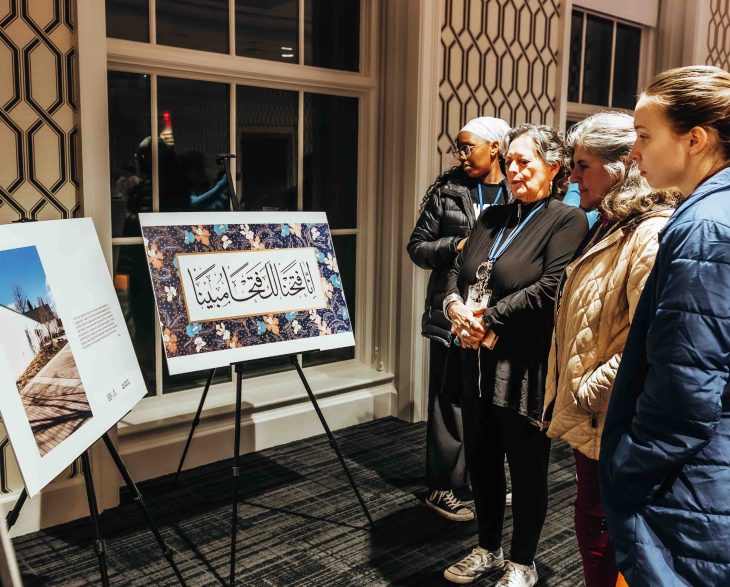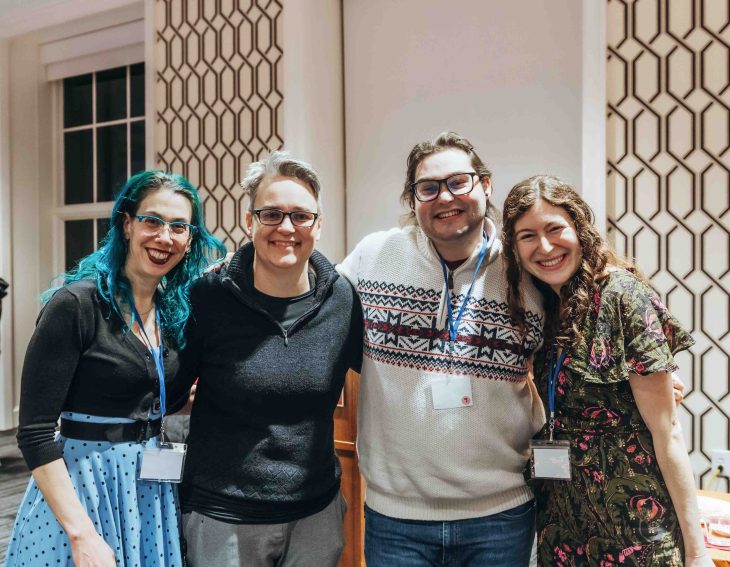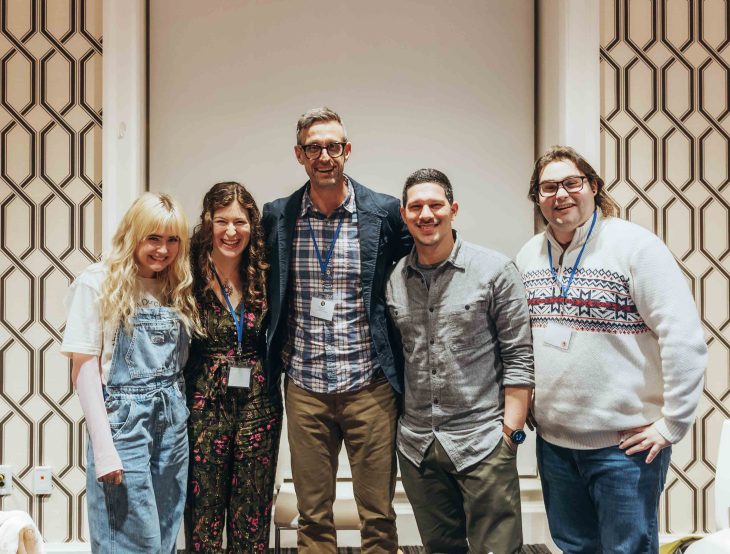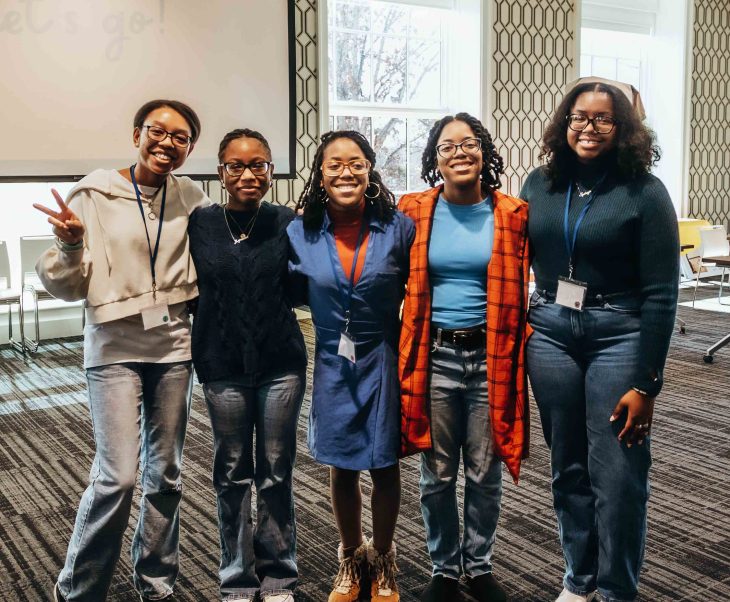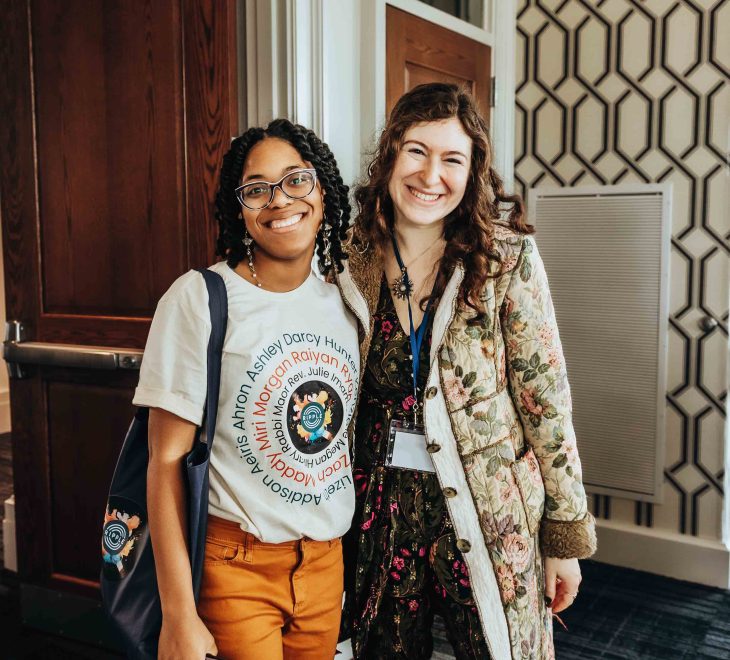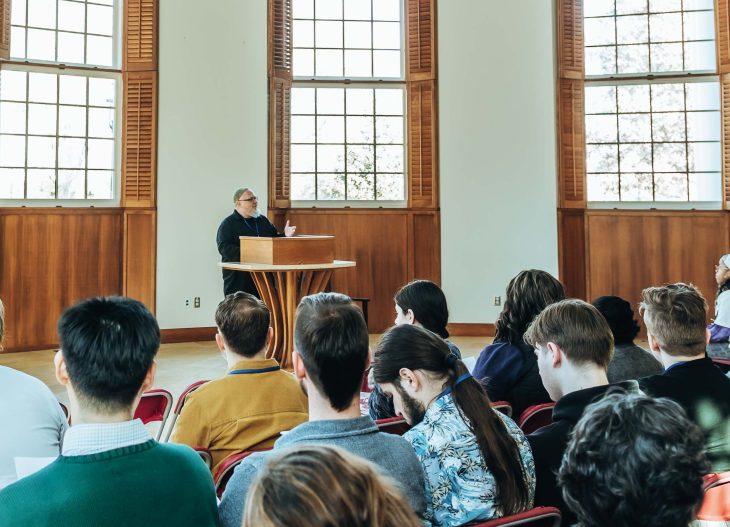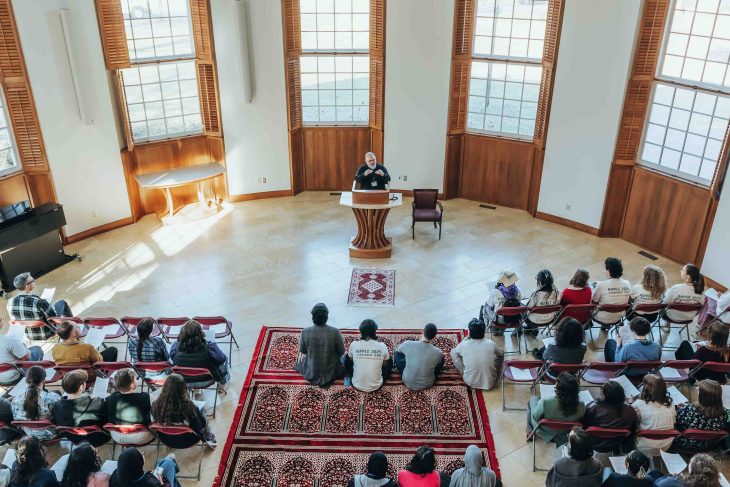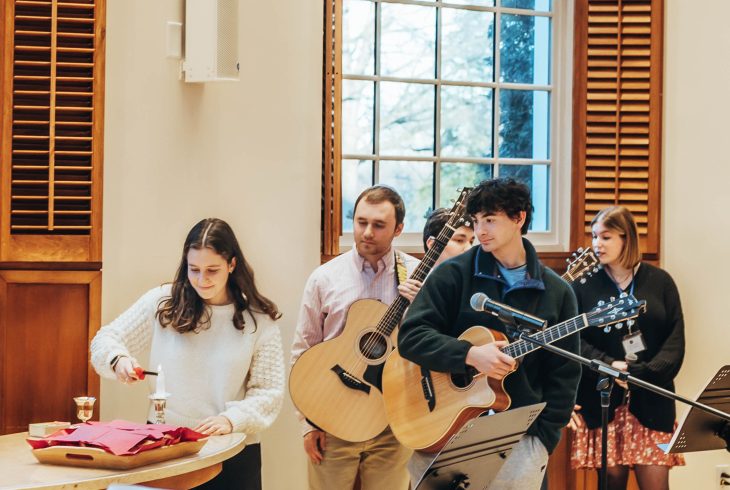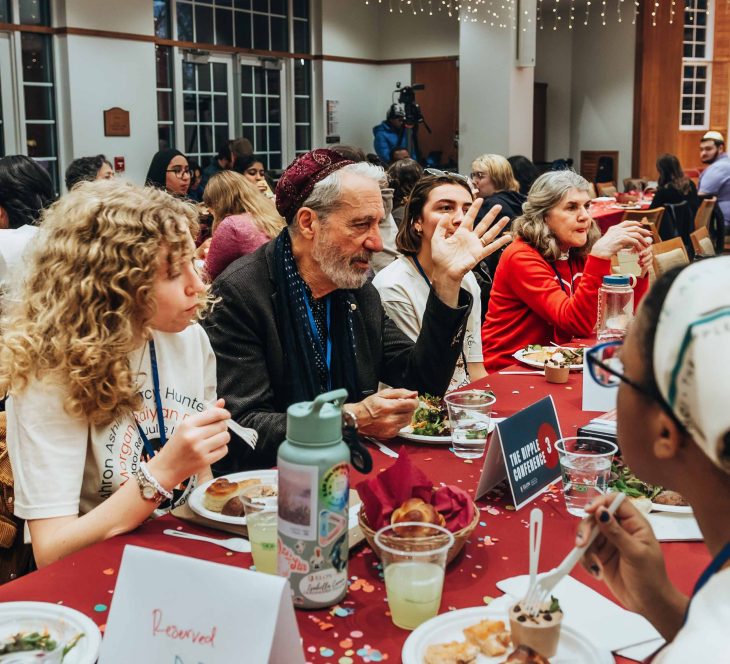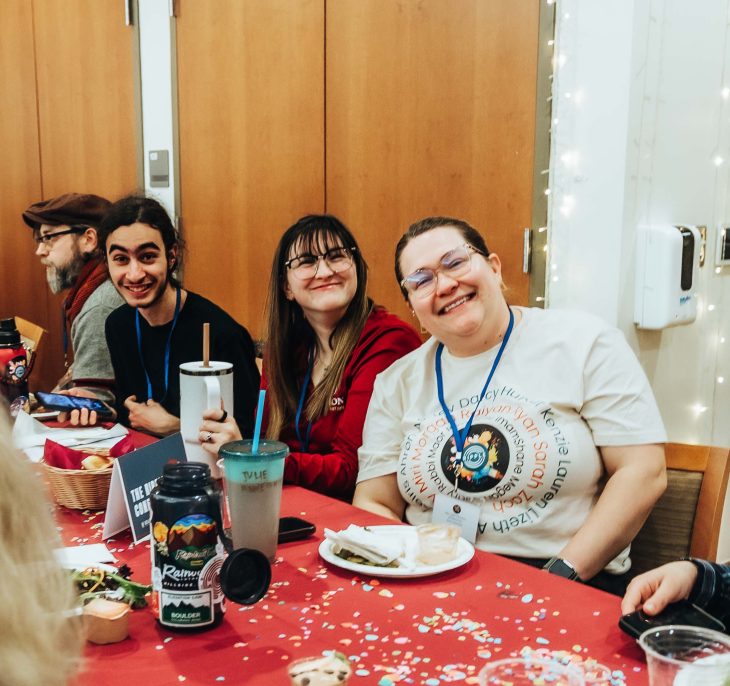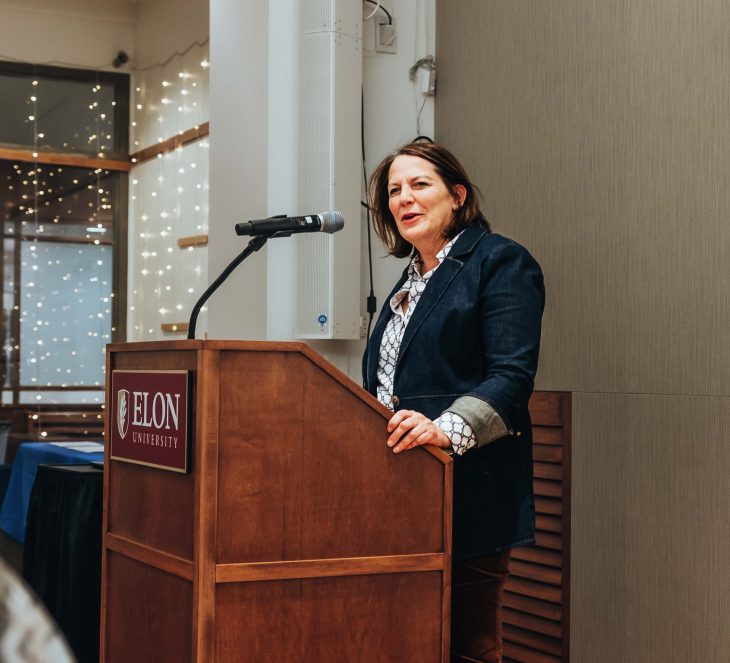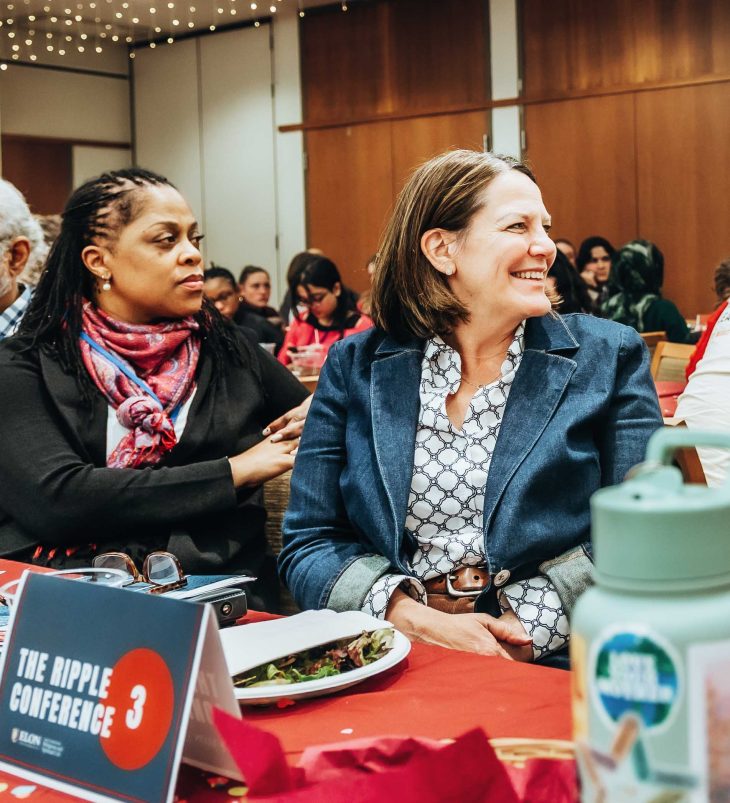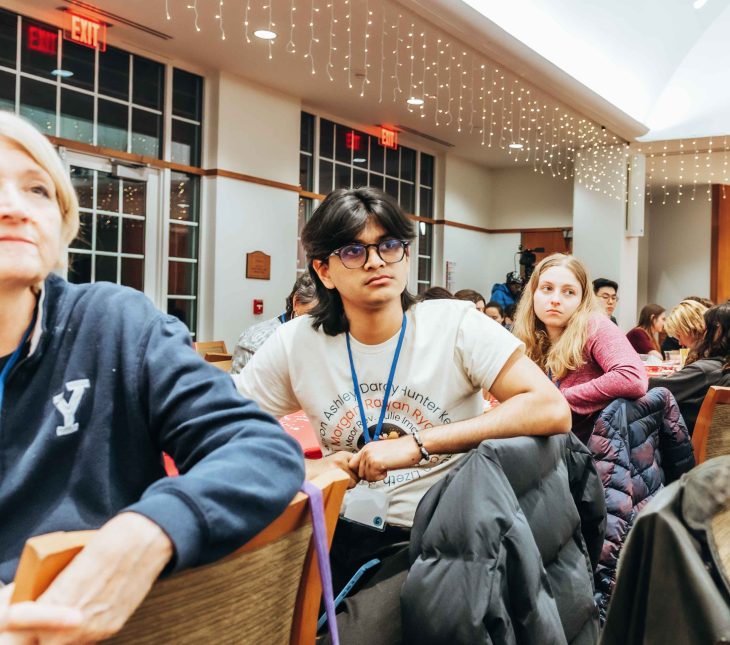Over 150 participants from 13 campuses from across the United States gathered for The Art of Interfaith from Feb. 21-23.
Each year, Elon’s annual student-led interfaith gathering, the Ripple Conference, brings together students, chaplains and interfaith leaders from across the country to engage in meaningful dialogue and build relationships across religious and spiritual traditions. This year’s conference, themed “The Art of Interfaith,” was the largest and most impactful yet, drawing 150 participants from 13 different colleges and universities across the country.
The conference was filled with both structured and spontaneous moments of connection. Ripple offers participants opportunities to develop bridge-building skills and connect meaningfully with others through a range of experiences. Ripple 2025 showcased the powerful relationship between spirituality and artistic expression.
“The experience of being co-director at Ripple was not only eye-opening but challenging and rewarding as well,” said Morgan Williams, co-director of the conference. “It’s amazing to see how much work goes into putting together a conference like this and making sure that each member of the leadership team gets to see a part of their vision come to life in Ripple. It’s inspiring, and it makes me want to do more.”
The 2025 conference featured keynote speaker Rodger Kamenetz, whose talk focused on empathy and imagination as the keys to greater understanding. Panelists Roman Williams, Josue Vega and Hannah Podhorzer not only shared their stories and perspectives but also their artwork through an interactive gallery walk.
“To create a panel with three people from different religious and spiritual backgrounds to connect over art was a beautiful experience that gave me insight into how religion and spirituality can be represented creatively,” said Zach Weitzen, special events co-coordinator. “To foster dialogue around the intersectionality of art and religion and how they relate to and complement each other is a meaningful experience I won’t ever forget.”
Hallway conversations turned into deep discussions about shared values. Students who had hesitated to attend Teaching Services found themselves drawn in by the music and rituals, engaging in practices different from their own. Speed Faithing allowed for rapid one-on-one exchanges of beliefs and perspectives, while Sacred Sounds provided an immersive experience of diverse spiritual traditions through art and music. The community art project encouraged participants to paint and exchange rocks with peers from other campuses, and the service project – supporting local refugee organizations – highlighted the importance of the arts and creativity, especially in times of hardship.
This year, Ripple expanded its reach beyond the Southeast, meeting the Truitt Center for Religious and Spiritual Life’s goals, aligned with the University’s Multifaith Strategic Plan, now in the implementation stage.
“Interfaith is not something you can create on your own,” said Ryan Gibbons, fellow co-director of Ripple. “It takes a group of dedicated people willing to be vulnerable and to facilitate an open dialogue on religion with an emphasis on acceptance and kindness. The Ripple Conference was so successful this year in large part due to an amazing team of student leaders willing to take up this responsibility, as well as a wonderful group of participants from around the country who all came together under the pursuit of understanding and building bonds. To me, that’s the beauty of interfaith.”
For many attendees, the conference was not just about learning—it was about experiencing interfaith in action.
“This past weekend was an exciting 48-hour whirlwind of connections, community, and arts,” said Kenzie Ross, marketing and PR co-chair. “I had the honor of capturing moments in between where friendships were made and perspectives shifted. So much was created the past few days and I’m glad to have been a part of it!”
As the conference concluded, participants carried the spirit of interfaith engagement back to their campuses and communities, ready to spread their own ripples of change. The conversations, relationships and learning from Ripple don’t end when attendees leave—they continue to shape perspectives and actions long after the final session.
“Interfaith engagement is more than dialogue; it’s about building relationships, embracing complexity, and learning to hold space for multiple truths,” said conference advisor and Director of Multifaith Programming and Engagement Hillary Zaken. “In a world that often feels divided, this work is more important than ever. And while the conference may be over, its impact is just beginning. I am just grateful to be a part of the wave.”



